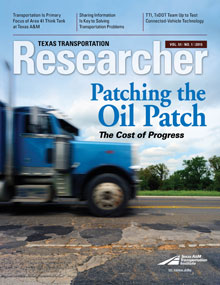
The Gulf Intracoastal Waterway (GIWW) stretches 1,100 miles, from St. Marks, Florida, to Brownsville, Texas. The waterway’s 379-mile Texas portion (the GIWW-T) links 11 deep-draft ports and 13 shallow-draft ports and handles two-thirds of the entire waterway’s traffic. In 2012, 90 percent of GIWW-T freight was classified as petroleum and chemical related.
Maintaining the GIWW-T is a big job. Ostensibly it’s the responsibility of the U.S. Army Corps of Engineers. In 1975, the Texas Coastal Waterway Act named the Texas Department of Transportation (TxDOT) as the official non-federal sponsor for the GIWW-T, with the primary responsibility of providing right-of-way and disposal areas for by-products of dredging operations and maintenance.
As federal funds have shrunk, the gap has widened between the GIWW-T’s maintenance needs and services provided by the Corps. Yet, it’s still important to properly maintain the GIWW-T.
“Without proper maintenance, the economy suffers,” explains Jim Kruse, director of the Texas A&M Transportation Institute’s (TTI’s) Center for Ports and Waterways. “For example, the GIWW-T should be dredged to its designed depth, or it takes more barge movements to transport the same amount of cargo. That inefficiency ends up costing someone — the shipper, the consumer — money somewhere along the way.”
This practice of light loading by shippers is often necessary to avoid running aground in an insufficiently dredged channel. The outdated Brazos River Floodgates are another pressing issue. Yet, without federal funding, the Corps cannot address these challenges.
At TxDOT’s request, Kruse and his TTI team conducted research to identify the most pressing maintenance issues on the GIWW-T. Their research included approaches TxDOT could use to assist the Corps in financing needed maintenance. The costs associated with failing to address the GIWW-T’s maintenance problems were also identified.
“TTI’s research has given us the information to properly evaluate the GIWW-T’s maintenance needs,” says Sarah Bagwell, TxDOT’s maritime planning and strategy director. “Now it’s up to us to work with our partners at the Corps as well as legislators at the state and federal levels to maximize the GIWW-T’s potential for Texas and the nation.”

